#pacific coast cc
Explore tagged Tumblr posts
Text
Updated
Meet Pacific Coast High students:







Simone Summers🌅
Harper Dune🏜️
Margot De Perla🐚
Hali Capri🌊
Phaedra Westward🌆
Finn Rosado🏄🏼♂️
Bella Parker💗
#sims 4#ts4#ts4 cc#ts4 edit#ts4 screenshots#the sims 4 cc#sim edit#ts4 lookbook#rainbow high#sims 4 lookbook#rainbow high pacific coast#pasific coast#ts4 rainbow high cc#ts4 rainbow high#ts4 rainbow#ts4 rainbow challenge#ts4 pasific coast#simone summers#harper dune#margot de perla#hali capri#phaedra westward#rainbow high cc#pacific coast cc#pacific coast#finn rosado#bella parker
26 notes
·
View notes
Text

Which crab’s pinch is strong enough to rival a lion’s bite? That would be the coconut crab (Birgus latro). Charles Darwin once described it as growing to “a monstrous size.” This gargantuan crustacean can measure 3 ft (1 m) from leg tip to leg tip and weigh up to 8 lbs (4 kg). A member of the hermit crab family, it uses its powerful claws to crack open coconuts. This species inhabits coasts off of the Indo-Pacific Ocean.
Photo: luca63, CC BY-NC 4.0, iNaturalist
#science#nature#natural history#animals#fact of the day#did you know#cool animals#coconut crab#crabs#crustacean
1K notes
·
View notes
Text

Eastern North Pacific long-beaked common dolphin Delphinus bairdii bairdii
Observed by chezasaurus, CC BY-NC
A note ...or, brief essay on common dolphin taxonomy
The common dolphin Delphinus delphis sensu lato has a near-cosmopolitan distribution, and considerable variability exists across the globe. Multiple species of common dolphin have been named, but in general there has only been one species recognized. In 1994, a study of common dolphins focused predominantly on the Eastern North Pacific found that the global offshore short-beaked common dolphin Delphinus delphis sensu stricto is different from the long-beaked common dolphin Delphinus capensis found in disjunct coastal areas around the world. The extremely-long-beaked and usually rather-dull-patterned Indo-Pacific common dolphin Delphinus tropicalis occupied a position as either a third species or a distinctive regional form of long-beaked common dolphin.
More detailed genetic studies in the 2010s did not uphold the short-beaked v. long-beaked dichotomy, however. A more complex evolutionary story is revealed by genetics, indicating that the long-beaked morphology developed repeatedly and independently in distinct coastal areas; thus, classification of all the world's long-beaked common dolphins as Delphinus capensis is erroneous as they do not all relate to one another to the exclusion of short-beaked common dolphins. Once again, all common dolphins were a single species.
Not all marine mammalogists were satisfied with solution of recognizing a single polymorphic species with a cosmopolitan distribution, particularly with the regard to the rather well-studied long-beaked common dolphins found on the Pacific coast of the US and Mexico. Despite overlapping geographically with short-beaked common dolphins, these long-beaked dolphins are distinguishable by external appearance, skull characters, mitochondrial DNA, and - to at least some degree - ecology and life history. In addition to the long beak, the broad, dark stripe running from gape to anus along the lower sides of these dolphins and often darkening the side of the face (as seen above) is one of the most recognizable characters. In 2024, a redescription of these dolphins considered them a separate species, the Eastern Pacific long-beaked common dolphin Delphinus bairdii. That paper notes that the Eastern Pacific long-beaked common dolphins off South America, with a >2500km gap from their northern counterparts, may warrant separation as a distinct subspecies. Another genetic study published in 2024 suggests that long-beaked common dolphins in the Western North Pacific may also belong to this species. That is the course followed on this blog - while the exact nature of these dolphins is in need of further study, recognizing such disjunct forms as at least separate subspecies is essentially the standard in other cetacean species.
The days of two globally-distributed common dolphin species are behind us, but what of the other long-beaked common dolphins besides those of the Eastern Pacific? The recent paper revalidating Delphinus bairdii suggests, as others have, that the long-beaked forms remaining at present in Delphinus delphis likely warrant taxonomic distinction. The evidence suggests to me each long-beaked form of common dolphin is probably best regarded as its own independent species, separate from the global short-beaked common dolphin. As tempting as it is to make this the course followed on this blog, I think I shall have to split the difference for now, given that there is evidence that some long-beaked populations are not reciprocally monophyletic with regards to sympatric short-beaks. The lack of complete genetic isolation from short-beaked common dolphins is not necessarily an indicator that specific distinction is unwarranted, but could indicate recent and ongoing speciation, possibly in response to geologically-recent climatic upheavals related to Pleistocene glacial cycles (...plus dolphins are not shy about hybridization). Though I believe further study will probably bear out recognition of additional common dolphin species besides D. delphis sensu stricto and D. bairdii, for now I will be listing other long-beaked common dolphins on this blog as Delphinus "delphis" to indicate their questionable taxonomic assignment.
Recall that the inatungulates blog is NOT a definitive source for taxonomy, and while I base my (generally splittery) taxonomic opinions on information and proposals that are in the literature, I am not beholden to any single source on taxonomy and the opinions here should not be treated as authoritative; hopefully, however, I will prompt an appreciation for (the sometimes-overlooked minutiae of?) ungulate diversity, and send curious readers to investigate the literature to form their own opinions from the available data.
Ref:
Becker, MA, KR Murphy, FI Archer, TA Jefferson, LW Keith-Diagne, CW Potter, MF Urrutia-Osorio, I Ndong, and MR McGowen. 2024. Common dolphin (Delphinus delphis) mitochondrial genomes from Senegal reveal geographic structure across the North Atlantic but provide no support for a global long-beaked clade. Marine Mammal Science e13144.
Cunha, HA, RL de Castro, ER Secchi, EA Crespo, J Lailson-Brito, AF Azevedo, C Lazoski, and AM Solé-Cava. 2015. Molecular and morphological differentiation of common dolphins (Delphinus sp.) in the southwestern Atlantic: Testing the two species hypothesis in sympatry.
Heyning, JE, and WF Perrin. 1994. Evidence for two species of common dolphins (genus Delphinus) from the eastern North Pacific. Contributions in Science 442:1-35.
Jefferson, TA, and K Van Waerebeck. 2002. The taxonomic status of the nominal dolphin species Delphinus tropicalis Van Bree, 1971. Marine Mammal Science 18(4):787-818.
Jefferson, TA, FI Archer, and KM Robertson. 2024. The long-beaked common dolphin of the eastern Pacific Ocean: Taxonomic status and redescription of Delphinus bairdii. Marine Mammal Science e13133.
Segura-García, I, JP Gallo, S Chivers, R Díaz-Gamboa, and AR Hoelzel. 2016. Post-glacial habitat release and incipient speciation in the genus Delphinus. Heredity 117:400-407.
#Delphinus bairdii bairdii#Eastern North Pacific long-beaked common dolphin#Cetacea#Delphinidae#cetacean#dolphin#North America#United States#California#Pacific Ocean#keep reading#posting about taxonomy#that was a long one whoops
32 notes
·
View notes
Text

Pacific newts
The four newts of the genus Taricha — the rough-skinned newt (Taricha granulosa), the red-bellied newt (Taricha rivularis), the Sierra newt (Taricha sierrae) and the California newt (Taricha torosa) — all found along the Pacific coast of North America, are small but deadly. Species in this genus contain tetrodotoxin, a neurotoxin that blocks signals between nerve cells.
(Image credit: Connor Long (CC-BY 3.0))
#connor long#photographer#pacific newts#newt#animal#amphibian#genus taricha#pacific coast#poisonous#nature
58 notes
·
View notes
Text




I ♥ bug collecting in granite falls
I'm not sure if this is a hot take or not but my favourite townie to boo up is Don Gooseman, in my game he loves to fish and take his kids out to the pacific west coast to live out their best 'gravity falls-esque' summer holiday when it's too hot in chestnut ridge! His wife is very chic though so a basic basegame cabin just wasn't enuf.
Thank you to all the CC creators whose content I have used here!!
#sims 4 interior#sims build#ts4 build#sims 4 build#my builds#sims 4 house#sims interior#ts4 interior#sims 4 custom content#show us your builds
2 notes
·
View notes
Text
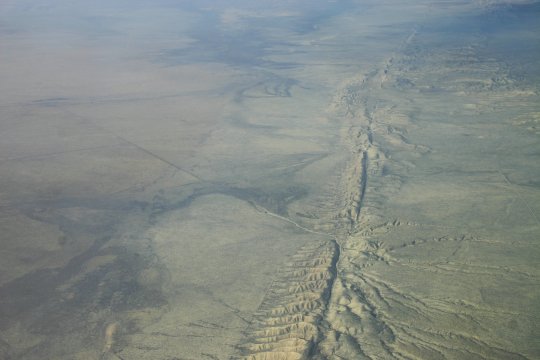
An aerial view of the San Andreas Fault on the west coast of North America. The fault is the boundary between the Pacific and North American tectonic plates.
35° 7′ 0″ N, 119° 39′ 0″ W
Wikimedia Commons file page
Credit: San Andreas Fault in the Carrizo Plain, aerial view from 8500 feet altitude. ( roughly 2590 metres) by Ikluft; CC BY-SA 4.0
5 notes
·
View notes
Text
PACIFIC AIRSHOW GOLD COAST 2023
Incoming photodump! I took literally thousands of pictures, and I have gone through and found what I feel are the better ones, which I am sharing across all my socials.
Will title the different acts accordingly! Pictures below the cut!
Jeff Boerboon's Yak-110

Royal Australian Air Force's C-130 Hercules & C-17 Globemaster III


Two-ship display of Matt Hall in his MXS (Silver) and Emma McDonald in her Extra 300 (Blue)





The "Freedom Formation", comprised of 1 Yak-55 & 13 different "RV" kit airplanes




Two-ship Aero L39 display

Hayden Pullen in his Extra 330LT

MV-22 Osprey of the US Marine Corps, doing a teaser flypast

CC-150 Polaris MRTT of the Royal Canadian Air Force

A BAC Strikemaster solo display

Lifesaver One of the Westpac Surf Life Saving Rescue Helicopter service, an EC-135P2, performing a rescue demo
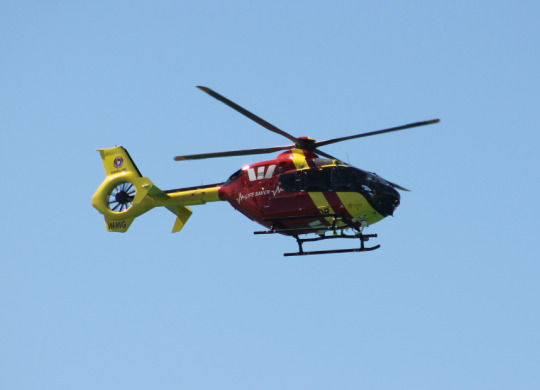


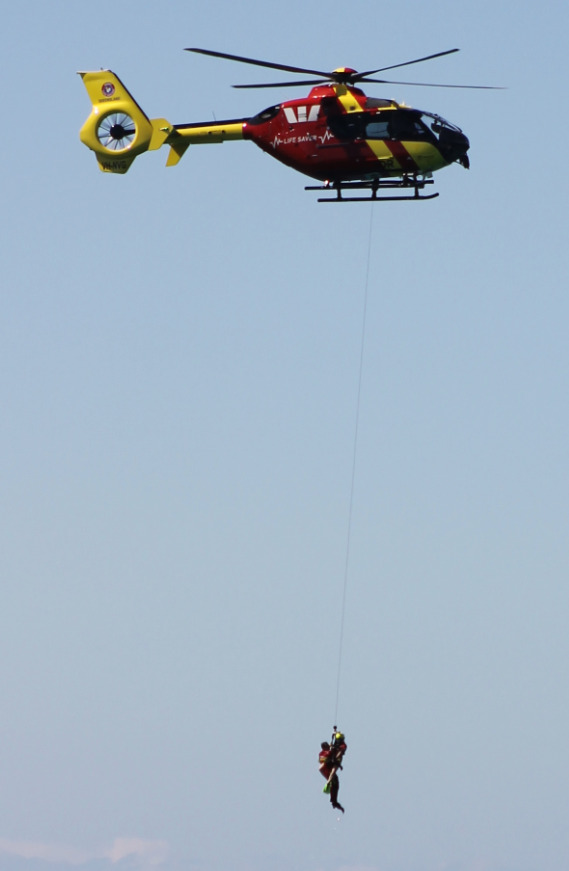
The "Red Star Roolettes" in a pair of Nanchang CJ6s and Yak 52s





The MV-22 again, this time for it's performance demo.

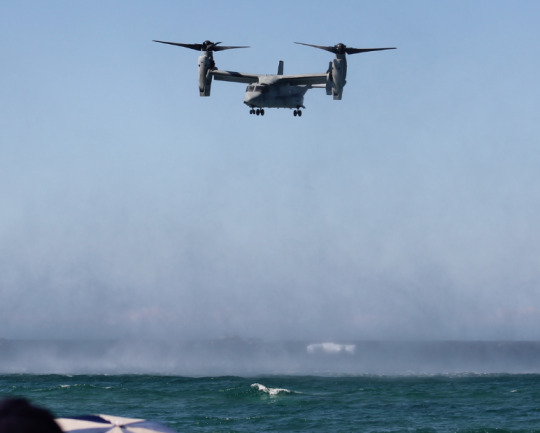

Emma came back for a solo performance

4 notes
·
View notes
Text

Sand and Surf Lodge, Fort Bragg, California
I went on vacation last month to the North Coast of California. It's a lovely area with scenic cliffs overlooking the Pacific, ancient redwood forests, and quaint sea-side towns. It doesn't boast the overloading excitement of, say, a Disneyland vacation, but if you want to relax to stunning views, it's a good place to go.
We stayed at this lovely lodge, where we were unexpectedly upgraded from a normal room to the "owner's suite," a two story, two bedroom suite attached to the main office and laundry. I've attempted to recreate it in broad strokes as a Vacation Rental in Windenburg, where I hope my sims will have as much fun as I did.
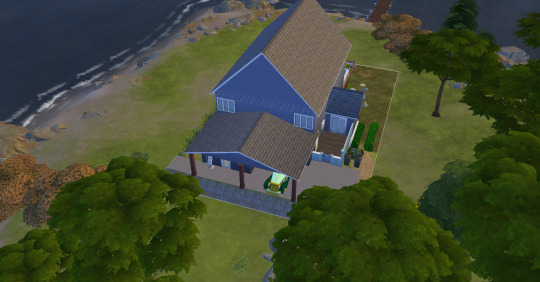
The front façade with carport and office. The suite is accessed through the gate to the side and through the sliding doors, inside of which is the keycard-access door.

The Office. The door in the background is another entrance to the suite. To the right is a door leading to the laundry.


The suite enters into the kitchen. There's a full-sized fridge and stove, and plenty of cookware and appliances. The picture to the left in the right-hand picture is the actual painting in the room: it's one of two pieces of cc I made for this build (otherwise I stuck to EA items or cc I already had, such as the stove from Hattie's Coastal collection and the rug from the Cottage Garden collection).

The first floor has a dining area and living area as well. The sims get only a tv stand, but the real hotel has an electric fireplace under the tv.

The porch on the first floor has some patio furniture and a barbeque. You can sit and watch the ocean for hours. Stairs lead off the porch and down into a small enclosed garden, and a gate lets out onto the coast-side trail.


The master bedroom. It's a little smaller in reality. Sliding glass doors lead onto the upstairs balcony, where two Adirondack chairs provide seating. By being upstairs and therefore higher, it provides a better view of the water than the porch below.
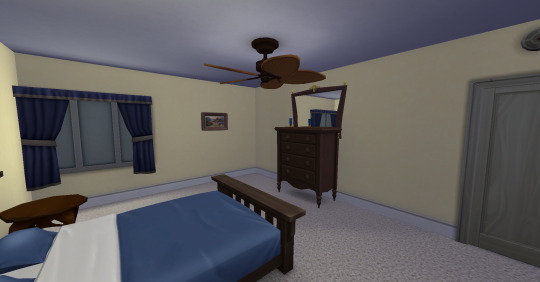
The second bedroom. The view is less than exciting: it overlooks a satellite dish and the parking lot. The chest of drawers, on the other hand, is fascinating: giant and with hidden compartments.


The bathroom, which connects to the two bedrooms. It features both a shower and a jacuzzi-style tub, the latter of which overlooks the ocean. I greatly appreciate Hamsterbellbelle for creating a sunken bathtub, as it made the bathroom that much more accurate.
#sims 4#simblr#sims#the sims 4#ts4#my gameplay#my builds#vacation#ts4 vacation#sand and surf lodge#fort bragg#fort bragg ca#real world recreations#sims recreations
2 notes
·
View notes
Text
CFB Promotion and Relegation - The PAC-10
PAC10 Tier One - The PAC-10 (FBS): Washington Washington State Oregon Oregon State Arizona Arizona State California Stanford Southern Cal UCLA
PAC10 Tier Two - Mountain West (FBS): Hawaii Fresno State San Diego State San Jose State Boise State BYU Utah Wyoming Air Force Colorado State
PAC10 Tier Three - Western Athletic Conference (FBS): Idaho Idaho State Montana Montana State Nevada UNLV Eastern Washington Sacramento State UC Davis Northern Arizona
PAC10 Tier Four - Big Sky (FCS): Southern Utah Weber State Northern Colorado Colorado Mines CSU-Pueblo Western Colorado Colorado Mesa Fort Lewis Adams State
PAC10 Tier Five - Pacific States Conference (D2): Cal Poly SLO San Diego Portland State Lewis & Clark Southern Oregon Eastern Oregon Western Oregon Central Washington Puget Sound Whitworth University
PAC10 Tier Six - Frontier Conference (D3): Carroll College (MT.) Montana State-Northern Montana Tech U of Montana-Western Rocky Mountain College College of Idaho Snow College (UT.) Pacific Lutheran (WA.)
PAC10 Tier Seven - Western Football Association (D3): Everett CC (WA.) George Fox Linfield Pacific (OR.) Willamette U. Claremont-Mudd-Scripps Pomona-Pitzer California Lutheran U. of Redlands Whittier College
PAC10 Tier Eight - Western Colleges Conference (D3): Arizona Christian Ottawa U. (AZ.) Chapman U. U. of La Verne Simpson U. (CA.) Saddleback College Feather River College Orange Coast College Moorpark Coll. (CA.) Palomar Coll. (CA.)
PAC10 Tier Nine - California Metro Conference (D3): Los Angeles Southwest College West Los Angeles College Los Angeles Harbor College Los Angeles Pierce College Los Angeles Valley College East Los Angeles College Sacramento City College Fresno City College San Diego Mesa Modesto JC
PAc10 Tier Ten - California Football Alliance (D3): Pasadena City College Santa Monica College San Bernardino Valley College Santa Barbara City College Santa Rosa Junior College College of San Mateo American River College San Joaquin Delta College College of the Siskiyous West Hills College – Coalinga
PAC10 Tier Eleven - California Football Conference (D3): City College of San Francisco San Jose City College Laney College College of the Sequoias Shasta College Chabot College Contra Costa College Monterey Peninsula College Mt. San Antonio College Foothill College
PAc10 Tier Twelve - Golden State Conference (D3): Long Beach City College Riverside City College Bakersfield College Butte College Chaffey College De Anza College Diablo Valley College Victor Valley College College Of The Canyons El Camino College
PAc10 Tier Thirteen - California Colleges Conference (D3): Cerritos College Fullerton College Gavilan College Hartnell College Grossmont College College Of The Desert Golden West College Compton College Glendale CC Los Medanos College
PAC10 Tier Fourteen - Small Colleges Conference (D3): Merced College Antelope Valley College Citrus College Allan Hancock College Community Christian College Mt. San Jacinto College Reedley College Santa Ana College Sierra College Southwestern College Ventura College Yuba College
0 notes
Text
Five steps of Wikipedia for Saturday, 23rd September 2023
Welcome, 你好, Välkommen, Dzień dobry 🤗 Five steps of Wikipedia from "Fanny Uribe" to "1703 Genroku earthquake". 🪜👣

Start page 👣🏁: Fanny Uribe "Fanny Esther Uribe López (born 1963) is an Ecuadorian biologist and politician who was the last person to be elected prefect of the Galápagos. ..."

Image licensed under CC BY-SA 4.0? by Edjoerv
Step 1️⃣ 👣: Ecuavisa "Ecuavisa is an Ecuadorian free-to-air television network that was launched on March 1, 1967 on Quito's channel 8 and Guayaquil's channel 2. It is one of the leading TV networks in the country. The channel has an international feed named Ecuavisa Internacional...."

Image licensed under CC BY-SA 4.0? by Ecuavisa
Step 2️⃣ 👣: Digital terrestrial television "Digital terrestrial television (DTTV or DTT, or DTTB with "broadcasting") is a technology for terrestrial television in which land-based (terrestrial) television stations broadcast television content by radio waves to televisions in consumers' residences in a digital format. DTTV is a major..."
Step 3️⃣ 👣: 2011 Tōhoku earthquake and tsunami "On 11 March 2011, at 14:46 JST (05:46 UTC), a Mw 9.0–9.1 undersea megathrust earthquake occurred in the Pacific Ocean, 72 km (45 mi) east of the Oshika Peninsula of the Tōhoku region. It lasted approximately six minutes, causing a tsunami. It is sometimes known in Japan as the "Great East Japan..."

Image by U.S. Navy photo
Step 4️⃣ 👣: 1498 Meiō earthquake "The 1498 Meiō earthquake (明応地震 Meiō Jishin) occurred off the coast of Nankaidō, Japan, at about 08:00 local time on 20 September 1498. It had a magnitude estimated at 8.6 Ms and triggered a large tsunami. The death toll associated with this event is uncertain, but between 5,000 and 41,000 casualties..."

Image licensed under CC BY-SA 3.0? by As6022014
Step 5️⃣ 👣: 1703 Genroku earthquake "The 1703 Genroku earthquake (元禄大地震, Genroku Daijishin) occurred at 02:00 local time on December 31 (17:00 December 30 UTC). The epicenter was near Edo, the forerunner of present-day Tokyo, in the southern part of the Kantō region, Japan. An estimated 2,300 people were killed by the shaking and..."

Image licensed under CC BY-SA 3.0? by As6022014
0 notes
Text
Bwahahaha
Years ago, we were anchored at Cape Lookout with friends for the weekend. Except for a narrow, 25'-ish deep pocket off the eastern hook, depth across the bight is less than two feet. A shallow shelf extends a few feet into the water before BOOM, a straight drop to the bottom.
It was middle/late Saturday afternoon. We had been on the beach and in and on the water all day. We were toast. So, we went back to the boat to kick start happy hour and chill under the awning. I had gone below with a couple of friends to make drinks and get nibbles ready when someone hollered down the companionway, "hey, we're moving".
We had been anchored bow-to-the-beach for the past 18-ish hours. I expected to see us swinging at anchor since I didn't have a stern anchor out, but not dragging. Topside though, when I looked forward, surprise, we were def slowly dragging away from the beach. WTF? I started the engine to drive forward to take tension off the chain to lift the anchor and reset it. Except, no sir. No can do. The windlass pulled about 6' of chain up (out of IDK 50-ish that was out) and then stopped. Full on stopped.
Troubleshooting. The windlass was getting power, so was the motor failing? The clutch? Or were we hung on something, and if hung, on what!? Holding position with the engine I let out more chain. Motor/clutch is good, so I tried to bring the chain up again, and again it stopped lifting. When it stopped that time we, on top of 29 tons of boat, were pulled hard to port, dragging us parallel to the beach. Ok, fuck me. We've caught, what? A whale? That would be beyond wild. A shark? That's more likely but, really? How big is that MF'er? These aren't Bahamian waters, so you can't see beyond a foot on a good day. I'll process that we caught something big enough to drag us later but, for now, how the hell do I get it off the chain?
The only thing I could think to do was to let out as much chain as possible to give it enough room and slack to get untangled. Worst case? I'd dump the entire chain and anchor? We had a spare anchor and rode and, at 25', I could recover what we might have to cut loose. That's assuming Moby didn't drag it out into the Atlantic, but damn, that was going to be a drastic option. What followed was two plus hours of letting out every stitch of chain and slowly raising it before whatever started puling us again. A group of good 'ol boys in a big CC headed to the lighthouse dock radioed to see if we were ok (really to see if we were drunk) because they watched us swing around like a kid had discovered the thruster control. When they figured out we weren't drunk, they were kind enough to try and help.
At one point when the engine and bow thruster wasn't enough to keep us from what was looking like a possible grounding, we tied off to their stern so they could drag us back to deeper water. Back in the pocket, they kept us in position while we tried raising and lowering the chain again and again. I don't remember how many tries later, but we were finally able to fully raise it. We and whatever had been tangled in the chain were free. The boat that helped us thought it was a shark, but other old salts I told the story to later said we had likely snared a huge ray. I had never (or since) seen one off the SC or NC coast big enough to believe it could move 29t of boat and a set anchor, but 🤷🏻♂️who tf knows?
We eventually repositioned and carried on with a delayed happy hour and the rest of the weekend. Did the experience keep us out of the water? Nope, we were back in the next morning, but we were slightly more aware we weren't alone. haha Oh, to be that young, dumb, and full of... ahem... again. So yea, beware of those 20,000 leagues in the middle of the vast Pacific, but also be aware of what lurks 300 yards off the beach in 25' of water 🤣
It is important to know the difference between "the sea" and "the ocean"
The Sea:
Infinite horizons. Endless possibilities. The quiet of a calm day. The rage of a storm. Booty and adventure. Yarr.
The Ocean:
20,000 leagues of fuck the hell no thank you. Too many goddamn jellyfish. Horrors beyond our comprehension. See also: the void (wet)
111 notes
·
View notes
Text
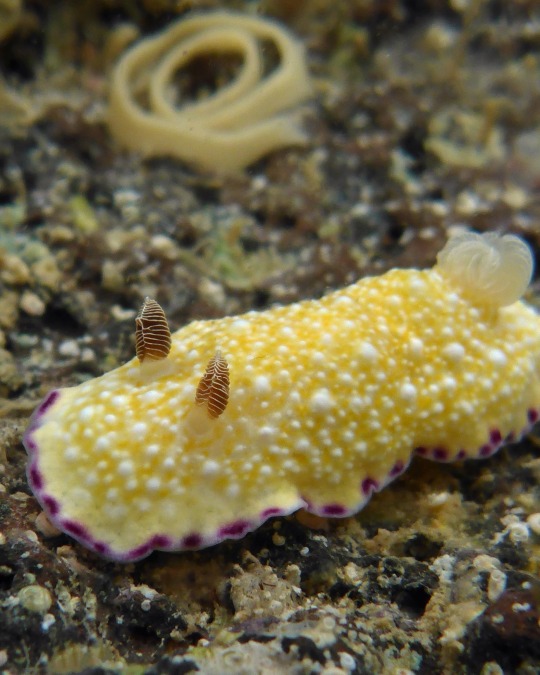
Is that a pastry? Nope, it's the purple-edged nudibranch (Goniobranchus albopustulosus)! Growing up to 1.2 in (30 mm) long, this tiny sea slug can be found in the waters of the Pacific Ocean off the coast of Hawaii. This primarily nocturnal species spends its days resting under rocks and like many other sea slugs, scientists think it feeds on sea sponges. Did you know? Over 2,000 species of nudibranch are known to science, and new ones are constantly being discovered.
Photo: anudibranchmom, CC BY-NC 4.0, iNaturalist
#science#nature#natural history#animals#did you know#fact of the day#nudibranch#sea slug#cool animals#marine life#marine biology#ocean life
1K notes
·
View notes
Text

Eastern spinner dolphin "Stenella" longirostris orientalis
Observed by mothmaniac, CC BY
Features for recognizing the bridled dolphins, pt. 3: spinner dolphins of the Eastern Tropical Pacific
Like the pantropical spotted dolphin Stenella attenuata, the spinner dolphin has a global range in warm waters. There are several different forms of spinner dolphin, and those in the Eastern Tropical Pacific (ETP) - essentially, off the west coast of Mexico to northern South America, in both inshore and offshore waters - are quite distinctive from those elsewhere. The only other bridled dolphin likely to present an opportunity for confusion within the range of these spinner dolphins is the pantropical spotted dolphin.
Useful features of pattern for ID:
These dolphins are entirely monotone gunmetal grey. Apart from perhaps a faintly-darker lipline and beak tip, and the occasional presence of a pale patch on the belly, the ETP spinner dolphins lack any patterning. Though they can also be dark grey overall, pantropical spotted dolphins always exhibit a dipping dorsal cape; in addition, the pantropical spotted dolphins in the ETP tend to be the most heavily-spotted specimens of all.
Useful features of body form for ID:
Rostrum is extremely long and slender.
Melon (forehead bulge) is relatively flat and sloping.
Dorsal fin is small, triangular, and often slightly forward-canted. Pectoral flippers are small.
Tailstock is thick and deep, and adult males often have a large bulge on the underside of it.
#Stenella longirostris orientalis#eastern spinner dolphin#Cetacea#Delphinidae#cetacean#dolphin#North America#Mexico#Nayarit#Pacific Ocean#keep reading
6 notes
·
View notes
Video
tumblr
Odd Squad cc.
79 notes
·
View notes
Text
Animal Crossing Fish - Explained #177
Brought to you by a marine biologist and her random whims...
CLICK HERE FOR THE AC FISH EXPLAINED MASTERPOST!
I'm kind of just doing whatever fish I feel like during this "fish past" business. I actually have a whole list I cross off from in a notebook. Today we will cover a fish that I ought to cover in the fall, but meh, it's just as good to cover it now, like, why not? It's the Pacific Saury.

The Pacific Saury gets one of the rare honors of being a semi-regular staple in Animal Crossing Pocket Camp. It first appeared in May 2019, and has since reappeared every fall, starting in either August for September. This is another great example of art imitating life, in that the Pacific Saury is considered an autumn delicacy in Japan. In fact, saury slow-cooked over hot coals is a symbol of autumn.
The Pacific Saury is named to species - Cololabis saira. In fact, this fish's species name saira comes directly from one of Japan's common names for the fish (another being sanma). No matter what you call it, the saury is a part of Order Beloniformes, meaning it's close relatives with the Flying Fish we've covered a few months ago. This is an interesting group of fish that have elongated "beaks", something I will go into more detail when we cover the other member in Pocket Camp, the Halfbeak. Just know for now that, unlike quite a few members in the Beloniformes, the Flying fish and the Pacific Saury have no beaks or very tame beaks, respectively, in comparison. Within this order, the sauries belong to the Family Scomberesocidae, which has roots in Greek and Latin that translate to "mackerel pike" and I hate it, because this thing is no where near either of those fish.

By Miya, CC BY-SA 3.0, https://commons.wikimedia.org/w/index.php?curid=1208299
This is a really small fish, often preyed upon by really anything, like tuna, marine mammals, etc. The fish themselves are planktivorous, meaning they eat plankton, usually zooplankton, like the eggs and larvae of other common fish, krill, copepods, and amphipods. Surprisingly this fish lacks a stomach - it just has one straight, short intestine, so it's constantly eating and following its food across the Pacific.
The Pacific saury is a highly migratory fish that follows the patterns of Pacific currents and eddies to a T. Like, look at this awesome map:

The paper -> https://www.researchgate.net/publication/248424351_Variations_in_the_abundance_of_Pacific_saury_Cololabis_saira_from_the_northwestern_Pacific_in_relation_to_oceanic-climate_changes
The saury's migration here is outlined as the dotted line, and it's very much correlated with seasonal shifts in temperature, which dictate plankton abundance. Adult saury hang out offshore and in high latitudes (basically subArctic waters) during the summer, but then move down the coast of Japan in the fall to reach their winter spawning grounds. The solid arrows represent two very prominent currents near Japan - the Oyashio coming from the Arctic, and the Kuroshio coming from the tropics. When these currents collide, they create eddies (or gyres) that trap and cultivate plankton production. Of course, the fish follow that and the fishermen follow the fish, making for an important industry and culture for the country. We have ocean currents to thank for a lot of aspects of our lives - the world is really connected by ocean currents!
And there you have it. Fascinating stuff, no?
#pacific saury#fish#ocean currents#marine biology#oceanography#animal crossing#animal crossing pocket camp#animals#science in video games#animal crossing fish explained
21 notes
·
View notes
Photo

Rose-bellied Bunting, Passerina rositae, Arriaga, Chiapas, Mexico
This is an endemic species and is found on a very thin strip of Mexico along the pacific coast.
photograph by Saadtowheed | Wikipedia CC
34 notes
·
View notes